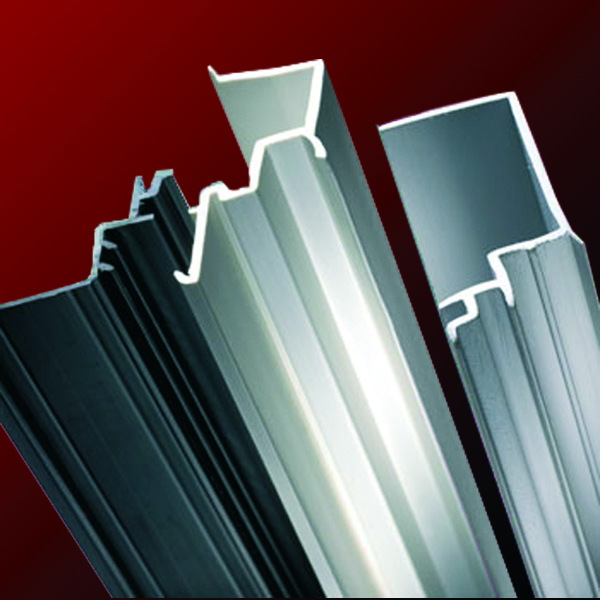Custom plastic extrusion designed to your industry needs
Custom plastic extrusion designed to your industry needs
Blog Article
A Comprehensive Guide to the Refine and Advantages of Plastic Extrusion
In the huge world of production, plastic extrusion arises as a very efficient and important procedure. Translating raw plastic right into continuous profiles, it caters to a huge selection of markets with its exceptional flexibility.
Recognizing the Essentials of Plastic Extrusion
While it may appear complex at first glimpse, the process of plastic extrusion is essentially simple - plastic extrusion. It is a high-volume manufacturing method in which raw plastic is melted and shaped into a continual account. The procedure starts with the feeding of plastic material, in the type of granules, powders, or pellets, into a warmed barrel. The plastic is after that thawed making use of a mix of warm and shear, applied by a turning screw. When the molten plastic reaches the end of the barrel, it is forced via a tiny opening referred to as a die, forming it into a desired form. The designed plastic is then cooled, solidified, and reduced right into desired sizes, completing the process.
The Technical Process of Plastic Extrusion Explained

Kinds Of Plastic Suitable for Extrusion
The option of the right kind of plastic is an important facet of the extrusion procedure. Various plastics offer distinct properties, making them more suited to certain applications. Polyethylene, as an example, is typically utilized because of its low cost and easy formability. It provides outstanding resistance to chemicals and wetness, making it optimal for products like tubing and containers. Similarly, polypropylene is another preferred selection because of its high melting point and resistance to fatigue. For more durable applications, polystyrene and PVC (polyvinyl chloride) are frequently picked for their strength and resilience. Although these are typical choices, the choice inevitably relies on the certain demands of the product being generated. Recognizing these plastic types can significantly boost the extrusion process.
Comparing Plastic Extrusion to Other Plastic Forming Methods
Comprehending the types of plastic appropriate for extrusion paves the method for a wider discussion on exactly how plastic extrusion stacks up against other plastic forming methods. Plastic extrusion is unrivaled when it comes to creating continuous profiles, such as seals, pipelines, and gaskets. It also allows for a consistent cross-section along the size of the item.
Secret Benefits of Plastic Extrusion in Manufacturing
In the world of production, plastic extrusion uses numerous significant benefits. One notable benefit is the cost-effectiveness of the procedure, which makes it an economically enticing manufacturing technique. Furthermore, this technique gives premium item versatility and enhanced manufacturing speed, thus increasing total production effectiveness.
Cost-Effective Manufacturing Technique
Plastic extrusion leaps important link to the forefront as a cost-effective manufacturing method in production. This process attracts attention for its more tips here capability to generate high volumes of product rapidly and successfully, offering makers with significant financial savings. The primary expense benefit is the ability to utilize more economical raw products. Extrusion utilizes polycarbonate products, which are less expensive contrasted to porcelains or steels. Even more, the extrusion procedure itself is reasonably simple, minimizing labor expenses. Furthermore, plastic extrusion requires much less power than traditional production techniques, adding to reduced functional costs. The process additionally minimizes waste, as any type of excess or malfunctioning materials can be reused and reused, giving an additional layer of cost-effectiveness. Overall, the monetary benefits make plastic extrusion an extremely eye-catching alternative in the production industry.

Superior Item Versatility
Past the cost-effectiveness of plastic extrusion, an additional significant benefit in making lies in its superior product flexibility. This makes plastic extrusion a suitable option for industries that need personalized plastic elements, such as auto, construction, click for source and packaging. In significance, plastic extrusion's item flexibility promotes technology while enhancing operational effectiveness.
Improved Manufacturing Rate
A substantial advantage of plastic extrusion lies in its enhanced manufacturing speed. Few various other manufacturing processes can match the rate of plastic extrusion. Furthermore, the ability to keep constant high-speed production without giving up item quality establishes plastic extrusion apart from other methods.
Real-world Applications and Influences of Plastic Extrusion
In the realm of manufacturing, the method of plastic extrusion holds profound relevance. The financial benefit of plastic extrusion, largely its high-volume and cost-effective output, has transformed manufacturing. The market is persistently aiming for developments in naturally degradable and recyclable materials, showing a future where the advantages of plastic extrusion can be preserved without endangering ecological sustainability.
Final thought
To conclude, plastic extrusion is a extremely effective and effective approach of transforming basic materials into varied items. It uses various advantages over various other plastic creating techniques, including cost-effectiveness, high output, marginal waste, and design flexibility. Its impact is greatly really felt in various industries such as building and construction, vehicle, and consumer goods, making it a pivotal procedure in today's manufacturing landscape.
Delving much deeper into the technological procedure of plastic extrusion, it begins with the option of the proper plastic material. As soon as cooled, the plastic is cut right into the needed sizes or injury onto reels if the product is a plastic movie or sheet - plastic extrusion. Comparing Plastic Extrusion to Various Other Plastic Forming Techniques
Understanding the kinds of plastic suitable for extrusion leads the method for a broader conversation on how plastic extrusion piles up against various other plastic forming approaches. Few various other manufacturing procedures can match the speed of plastic extrusion.
Report this page